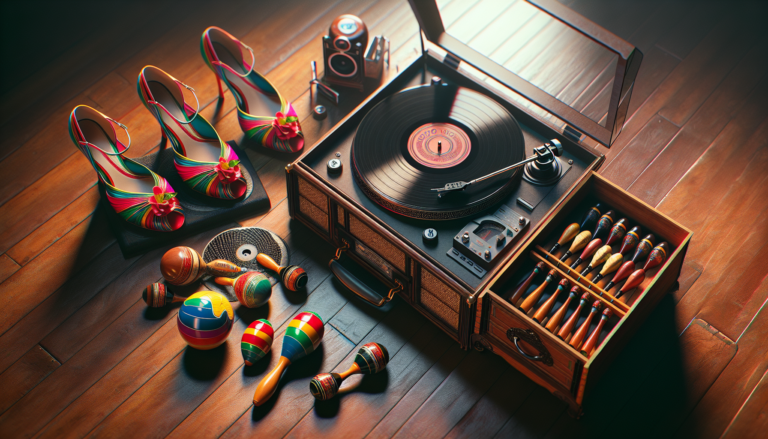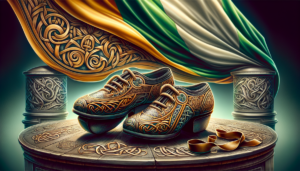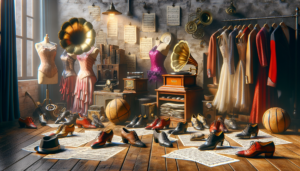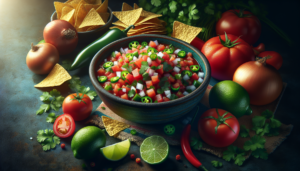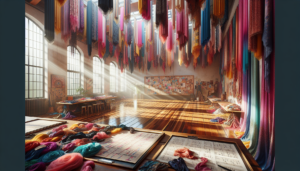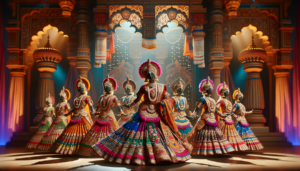Rumba is a captivating dance style and musical genre that has captured the hearts of people around the world. With its sensual movements, intricate rhythms, and rich history, rumba has become one of the most popular forms of dance and music. In this comprehensive guide, we will explore the fascinating world of rumba, from its origins to its modern-day variations.
Introduction to Rumba
What is Rumba?
Rumba is a dance and musical style that originated in Cuba. It is characterized by its slow, romantic movements and distinctive rhythms. The dance involves a combination of smooth, gliding steps and sharp, staccato movements, creating a mesmerizing visual display. The music, on the other hand, features a syncopated beat and a strong emphasis on percussion instruments, such as congas, maracas, and claves.
Rumba is often referred to as the “dance of love” due to its sensual nature and the intimate connection between the dance partners. It is a popular choice for weddings, social events, and ballroom dance competitions, where couples showcase their skills and emotional expression through their movements.
History of Rumba
The origins of rumba can be traced back to the late 19th century in Cuba. It emerged as a fusion of various African and European dance and musical traditions, influenced by the rhythms and movements of enslaved Africans brought to the island. Over time, rumba evolved and gained popularity, becoming an integral part of Cuban culture.
In the 1920s and 1930s, rumba made its way to the United States and Europe, where it quickly gained a following. American and European dancers and musicians adapted the style to suit their own tastes, leading to the development of different variations of rumba. Today, rumba is enjoyed and performed worldwide, with each region adding its own unique flair to the dance and music.
Rumba Dance Techniques
Basic Steps of Rumba
Learning the basic steps of rumba is essential for anyone interested in mastering this dance. The foundation of rumba consists of three main steps: the forward walk, the backward walk, and the Cuban motion. These steps are performed in a box-like pattern, with the dancers moving in a square formation.
To execute the forward walk, the leader steps forward with their left foot, followed by the right foot, and then closes the left foot next to the right. The follower mirrors these steps, starting with their right foot. The backward walk follows the same pattern but in reverse, with the leader stepping back with their right foot and the follower stepping back with their left.
The Cuban motion is a key element of rumba that adds fluidity and sensuality to the dance. It involves a rolling hip movement, where the dancers shift their weight from one foot to the other, creating a smooth, undulating motion. Mastering the Cuban motion takes practice and requires a strong connection between the dance partners.
Advanced Rumba Techniques
Once dancers have mastered the basic steps of rumba, they can explore more advanced techniques to add complexity and flair to their performance. These techniques include:
- Arm styling: Using graceful and expressive arm movements to enhance the overall dance.
- Turns and spins: Incorporating various types of turns, such as underarm turns, cross-body leads, and spot turns.
- Dips and drops: Adding dramatic dips and drops to create moments of surprise and excitement.
- Footwork variations: Experimenting with different foot patterns and embellishments to add variety to the basic steps.
Advanced rumba dancers often incorporate elements of other dance styles, such as salsa, cha-cha, and contemporary dance, to create unique and captivating routines. The key to mastering advanced rumba techniques is to build a strong foundation in the basics and continuously practice and refine your skills.
Learning Rumba
Rumba Tutorials on YouTube
For those looking to learn rumba, YouTube is an excellent resource. There are countless rumba tutorials available, ranging from beginner to advanced levels. These tutorials often break down the steps and techniques into easy-to-follow segments, allowing viewers to learn at their own pace.
Some popular YouTube channels that offer rumba tutorials include:
- Dance Tutorials Live
- DancePapi
- Passion4Dancing
- Dance Lessons Unlimited
When searching for rumba tutorials on YouTube, be sure to look for videos that match your skill level and learning style. It can also be helpful to watch multiple tutorials from different instructors to gain a well-rounded understanding of the dance.
Notable Instructors: Noah De Mers and Sarah Storch
Among the many talented rumba instructors on YouTube, Noah De Mers and Sarah Storch from the Mercer Ballroom Dance Club stand out for their engaging and informative tutorials. Their video, “How to Dance the Rumba,” has garnered over 61,000 views since its publication in September 2021.
In the tutorial, Noah and Sarah break down the basic steps of rumba, including the forward walk, backward walk, and Cuban motion. They provide clear explanations and demonstrations, making it easy for beginners to follow along. They also offer tips on how to add musicality and expression to the dance.
What sets Noah and Sarah apart is their friendly and approachable teaching style. They create a comfortable learning environment and encourage viewers to practice and have fun with the dance. Their passion for rumba shines through in their instructions, inspiring others to fall in love with this beautiful dance style.
Rumba Music
Characteristics of Rumba Music
Rumba music is an essential component of the dance, providing the rhythmic foundation and emotional backdrop for the movements. Rumba music is characterized by its syncopated rhythms, percussion-heavy instrumentation, and sensual melodies. The tempo of rumba music is typically slow to moderate, allowing dancers to move with grace and fluidity.
The main instruments used in rumba music include:
- Conga drums: Providing the essential rhythmic backbone of the music.
- Maracas: Adding a lively and energetic sound to the rhythm.
- Claves: Creating a distinctive “clicking” sound that helps dancers stay on beat.
- Piano: Playing melodic lines and harmonies that complement the percussion.
- Bass: Providing a deep, resonant foundation for the music.
The interplay between these instruments creates the signature sound of rumba music, which is both sensual and energizing. The rhythms often feature a “call and response” pattern, where the lead instruments play a phrase, and the other instruments respond, creating a dynamic and engaging musical conversation.
Popular Rumba Songs
Over the years, many rumba songs have become classics, beloved by dancers and music enthusiasts alike. Here are a few popular rumba songs that have stood the test of time:
- “Bésame Mucho” by Andrea Bocelli
- “Sway” by Dean Martin
- “Quizás, Quizás, Quizás” by Nat King Cole
- “Perfidia” by Luis Miguel
- “Historia de un Amor” by Luis Miguel
These songs showcase the emotional depth and musical richness of rumba, with their lush melodies, heartfelt lyrics, and infectious rhythms. Whether you are a dancer or simply a lover of great music, these rumba classics are sure to captivate and inspire you.
Conclusion
Rumba is a dance and musical style that has captured the hearts of people around the world. With its sensual movements, intricate rhythms, and rich history, rumba offers a captivating and immersive experience for dancers and music lovers alike. By exploring the techniques, tutorials, and music of rumba, you can deepen your appreciation for this beautiful art form and perhaps even discover a new passion.
Whether you are a beginner just starting your rumba journey or an experienced dancer looking to refine your skills, remember that the key to mastering rumba lies in practice, patience, and a willingness to express yourself through movement. So put on your dancing shoes, let the music move you, and embrace the sensual, captivating world of rumba.

